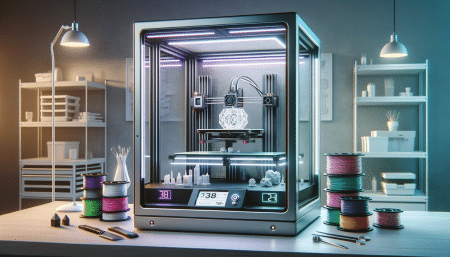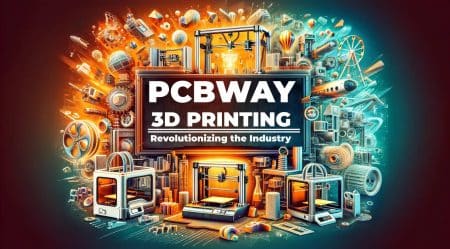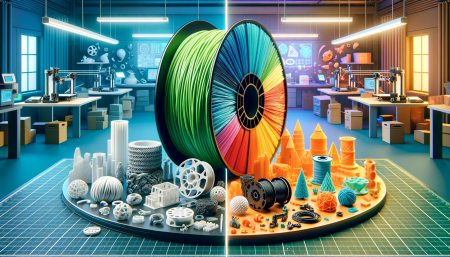PETG filament is a popular choice among 3D printing enthusiasts due to its combination of strength, durability, and ease of use. It stands for polyethylene terephthalate glycol, and is a type of copolyester that combines the properties of polyethylene terephthalate (PET) and polyethylene glycol (PEG). This blend of materials gives PETG filament excellent strength, flexibility, and chemical resistance, making it an ideal choice for a wide range of 3D printing applications.
One of the standout features of PETG filament is its strength. It is known for its high tensile strength and impact resistance, making it a good choice for functional parts that need to withstand stress and wear. PETG filament is also very durable and resistant to UV light, making it suitable for outdoor use. Additionally, PETG filament has good chemical resistance, making it resistant to a range of acids, alkalis, and organic solvents. This makes it a good choice for applications where the printed part may be exposed to harsh environments.
Another key property of PETG filament is its ease of use. It has low shrinkage and warping, making it easy to print with minimal post-processing. It also has good layer adhesion, which means that the layers of the printed part will stick together well, resulting in strong and accurate prints. PETG filament is also easy to sand and paint, making it a good choice for projects where a smooth finish is desired.
PETG filament is a versatile material that can be used for a wide range of 3D printing applications. Some common applications include:
- Functional parts: Due to its strength and durability, PETG filament is often used for functional parts that need to withstand stress and wear. This makes it a good choice for projects such as gears, hinges, and brackets.
- Prototyping: PETG filament is a good choice for prototyping due to its low shrinkage and warping, as well as its good layer adhesion. This allows for accurate and reliable prototyping of parts, which can be useful for testing and iteration.
- Outdoor use: PETG filament is resistant to UV light, making it suitable for outdoor use. This makes it a good choice for projects such as planters, signage, and outdoor furniture.
- Food-safe applications: PETG filament is food-safe and can be used for applications such as food containers, cutlery, and kitchen utensils.
Comparison of PETG to other popular 3D printing materials (such as PLA and ABS)

There are various filaments to choose from, each with its unique properties and characteristics. Two of the most popular filaments are PLA (polylactic acid) and ABS (acrylonitrile-butadiene-styrene). However, PETG (glycol-modified PET, or polyethylene terephthalate glycol) is a newer filament that is quickly gaining popularity among 3D printing enthusiasts.
So, what sets PETG apart from other filaments like PLA and ABS? We’ll take a look at the benefits of using PETG filament for your 3D printing projects, and how it compares to other popular materials.
Pros and cons of PETG:
One of the biggest advantages of PETG is its strength and durability. PETG has a higher impact resistance and tensile strength than PLA, making it a good choice for functional parts and objects that will see a lot of wear and tear. PETG is also more resistant to heat and UV light than PLA, meaning it won’t become brittle or yellow over time.
In terms of printing performance, PETG can be a bit more challenging to work with than PLA. It requires higher printing temperatures (around 240-260°C) and has a higher tendency to string and blob compared to PLA. However, with proper calibration and settings, it is possible to achieve excellent print quality with PETG.
One major benefit of PETG is its chemical resistance. Unlike ABS, which can emit harmful fumes when printing, PETG is much safer to work with and has a lower environmental impact. PETG is also food safe, making it a good choice for kitchen utensils or other objects that will come into contact with food.
PETG vs. PLA:
When it comes to deciding between PETG and PLA, there are a few key factors to consider.
First, it’s important to consider the intended use of your print. If you need a strong and durable object, PETG is likely the better choice. On the other hand, if you’re looking for a softer, more flexible material, PLA may be a better fit.
Another important factor is printing temperature. PETG requires higher printing temperatures than PLA, so if you have a printer with a limited temperature range, PLA may be a better option.
Finally, it’s worth considering the environmental impact of your choice. PETG has a lower environmental impact than ABS, and is a more sustainable option than PLA, which is made from non-renewable resources.
PETG is a versatile and reliable filament that offers a number of benefits for 3D printing projects. Its strength, durability, and chemical resistance make it a good choice for a wide range of applications, from functional parts to kitchen utensils. While it may be a bit more challenging to work with than PLA, with the right settings and calibration, it is possible to achieve excellent print quality with PETG.
Potential drawbacks of using PETG filament
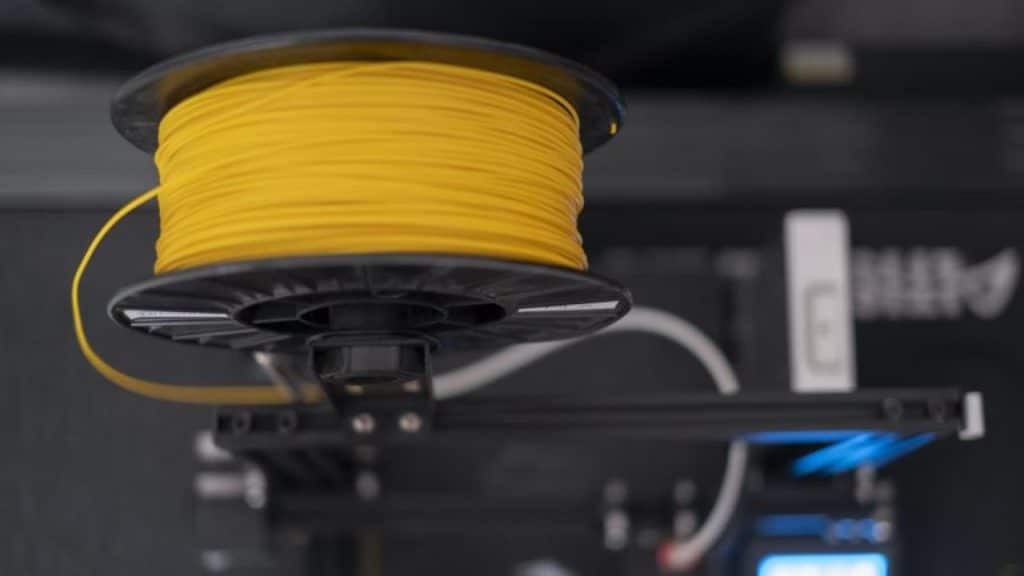
As mentioned above, PETG is stronger and more flexible than PLA, making it a good choice for functional parts and prototypes. It is also easier to print with than ABS, which is known for its tendency to warp and require a heated bed.
However, PETG is not without its drawbacks. One of the main challenges of using PETG is its sensitivity to moisture. PETG absorbs moisture more easily than other materials such as PLA, which can lead to warping and other issues. It is important to store PETG filament in an airtight container with a desiccant to prevent moisture absorption.
Another potential drawback of PETG is its higher cost compared to other materials such as PLA. PETG filament is generally more expensive than PLA, which may be a factor for users on a budget.
As mentioned above, the main challenge of using PETG filament is its sensitivity to moisture. To overcome this issue, it is important to store PETG in an airtight container with a desiccant and to ensure that the printer is in a dry environment. It is also a good idea to dry the filament before use by setting it in an oven at a low temperature for a few hours.
Another potential drawback of PETG is its higher cost compared to other materials. To overcome this issue, users can look for deals and discounts on PETG filament or consider using a lower-cost material for less critical applications.
PETG filament is a popular choice for 3D printing due to its strength, flexibility, and ease of use. While it does have some potential drawbacks such as sensitivity to moisture and higher cost, these can be overcome with proper storage and handling. If you consider using PETG for your 3D printing projects, keep these factors in mind to ensure the best possible results.
Finishing and post-processing techniques for PETG prints
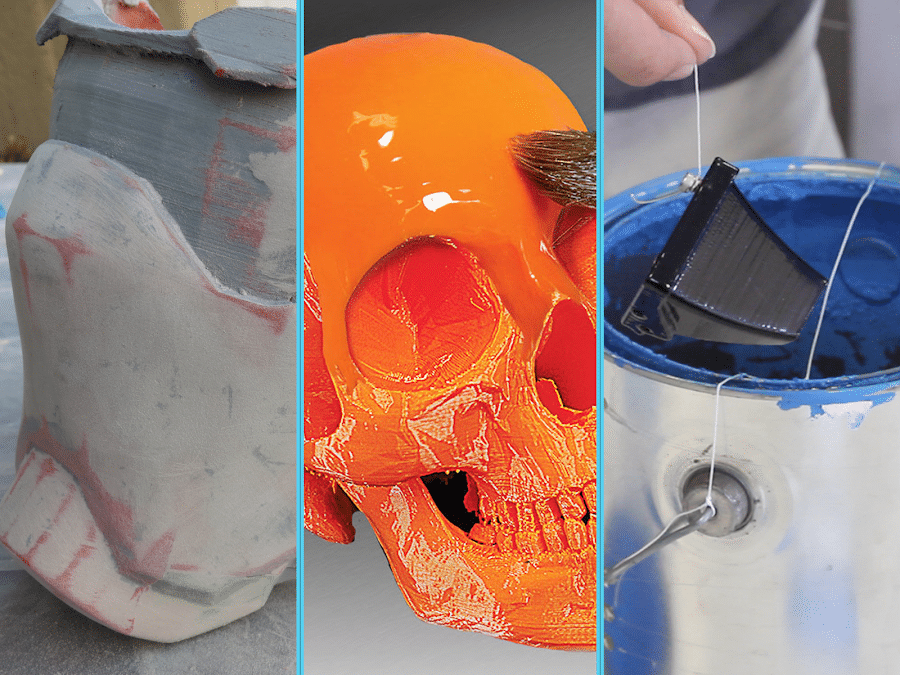
There are several ways to finish and post-process PETG prints to achieve a professional look and feel. Here are some techniques to consider:
- Sanding: Sanding PETG prints is a great way to smooth out rough surfaces and remove layer lines. Start with a low grit sandpaper, such as 120, and work your way up to higher grits like 220 or 400. Be sure to sand evenly and in the direction of the layers.
- Acetone smoothing: PETG is resistant to acetone, so you can use it to smooth out the surface of your prints. Simply apply a small amount of acetone to a cloth and rub it over the surface of your print. Be sure to wear gloves and work in a well-ventilated area.
- Heat treatment: Applying heat to PETG prints can help to improve their overall strength and reduce warping. This can be done with a heat gun or oven. Be sure to use caution when applying heat, as PETG has a high melting point and can deform if overheated.
- Painting: PETG prints can be painted with a variety of different paints, including water-based and oil-based paints. Be sure to use a primer first and apply thin, even coats of paint to avoid drips and runs.
- Polishing: PETG prints can be polished using a variety of methods, including buffing, tumbling, and vibratory finishing. This can help to achieve a smooth, glossy finish on your prints.
There are many ways to finish and post-process PETG prints to achieve a professional look and feel. Experiment with different techniques to find the ones that work best for you.
Cost comparison of PETG filament to other materials

One important factor to consider when choosing a 3D printing material is cost. PETG filament tends to be more expensive than some other materials, such as PLA. However, it can also be more cost-effective in the long run due to its improved strength and durability.
When comparing the cost of PETG to other materials, it’s important to consider the overall cost of each project. For example, if a project requires a large amount of material, the cost of PETG may be more reasonable when compared to the cost of a weaker material that requires more frequent replacement.
It’s also worth considering the cost of post-processing and finishing techniques. PETG may require less post-processing than some other materials, which could save time and money.
The cost of PETG filament should be weighed against the benefits it offers in terms of strength, durability, and the ability to produce high-quality prints. While it may be more expensive upfront, the long-term cost-effectiveness of PETG may make it a more cost-effective choice for certain projects.
Conclusion: Is PETG the right choice for your 3D printing projects?
In conclusion, PETG filament can be a great choice for a wide range of 3D printing projects. Its combination of strength, durability, and ease of use make it a popular choice among both beginner and experienced 3D printers. While it may have some potential drawbacks, such as slightly higher cost and a learning curve for post-processing, overall it is a reliable and versatile material that is well worth considering for your next 3D printing project.
Overall, PETG is a good choice for those looking to produce durable and high-quality prints, and it is definitely worth considering as an alternative to more traditional 3D printing materials such as PLA and ABS.
If you’ve found this guide to PETG filament helpful, we’d love to hear from you. Share your thoughts and experiences with PETG in the comments section below. Have you used PETG for your projects? How did it perform? Let’s keep the conversation going!
Also, if you want to stay updated on the latest in the 3D printing world, consider joining our newsletter. You’ll get a regular dose of tips, reviews, news, and more, all straight to your inbox. Sign up today and never miss an update in the world of 3D printing. Let’s explore and push the boundaries of what 3D printing can do.




